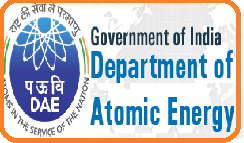Part 1 of 2 Parts
China and Russia each have very ambitious nuclear plans, both for their domestic markets and the export market. Close behind them, India is planning major expansions to its domestic nuclear program to fill a serious need for more power. India intends to triple its nuclear power generation by 2031. Critics of the expansion say that India needs to pay more attention to nuclear regulation before it carries out such a bold plan.
Dr. Jitendra Singh is India’s Minister of State for Personnel, Public Grievances, and Pensions and Prime Minister’s Office. He highlighted this problem while he was answering a question in the Lok Sabha which is the lower house of the Indian Parliament. He said that India currently has an installed nuclear power capacity of six thousand seven hundred and eighty megawatts. This accounts for one point eight four percent of the total Indian power capacity of three hundred sixty-eight thousand, six hundred and ninety megawatts. The current plan is to augment the existing nuclear capacity of six thousand seven hundred and eighty megawatts up to twenty-two thousand, four hundred and eighty megawatts by 2031. This will be accomplished by undertaking the “progressive completion of projects under construction.”
Dr. Singh went on to say that there will be an increase in nuclear power capacity of five thousand, three hundred megawatts in the next five years. This includes a five hundred-megawatt Prototype Fast Breeder Reactor (PFBR) which is currently being constructed at the Madras Atomic Power Station in Kalpakkam, India. During an earlier debate in Lok Sabha in June of 2019, Singh had said that the installed nuclear power capacity would reach thirteen thousand megawatts by 2025 as certain projects are completed.
In a November 2019 debate in the Lok Sabha concerning the domestic nuclear energy target, the Indian government claimed that it has instituted several measures that will increase the share of nuclear power in overall power generation in India. This included administrative approval and financial sanction of ten indigenous seven hundred megawatts Pressurized Heavy Water Reactors (PHWRs). Another two Light Water Reactors (LWRs) will be constructed in collaboration with Russia. India has also established the nuclear insurance pool (INIP) to deal with concerns that the private sector has about India’s nuclear liability bill. India’s Atomic Energy Commission has given its approval for ten additional uranium mining projects. Two more related projects are planned for Jharkhand.
These are important steps in the expansion of nuclear power in India, the government of Prime Minister Modi has had little to say about a critical related issue. That issue concerns nuclear security-related legislation or institutional measures. Nuclear security and safety are especially important for India because of political instability and the security environment on the India subcontinent.
India has streamlined a great deal of its legislative and institutional practices based on the guidelines and standards set by the International Atomic Energy Agency (IAEA). Changing security concerns have caused India’s nuclear safety protocols to be updated regularly. In February of 2020, Singh repeated that India “ensures safety of Nuclear Power Plants according to International Standards.”
Despite this work on nuclear safety and security, India has come to international attention with respect to nuclear security standards. The main reason for this attention is that India has been reluctant to give details of its nuclear security policies and practices. This extreme secrecy has damaged India’s reputation. Beyond international concern, India itself should be concerned about such matters because of its ambitious plans to expand nuclear power domestically. This will probably involve the private sector at some point and such participation would be improved if India provided details about its rules and regulatory mechanisms.
Please read Part 2 next
